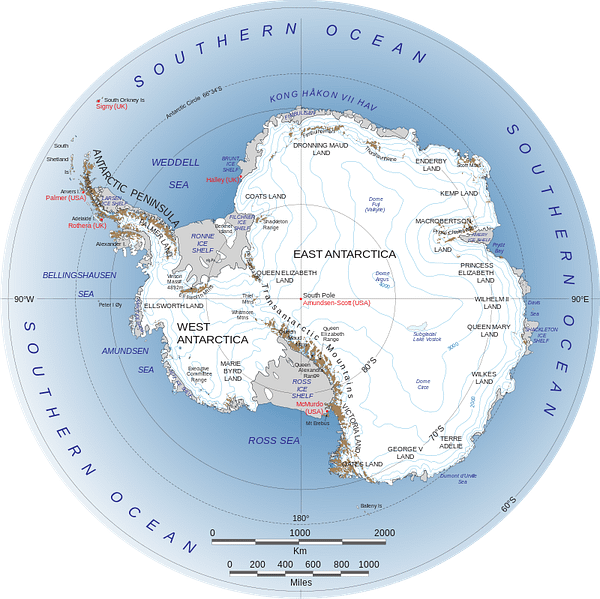This travel wiki page of Antarctica will help guide travelers with quick and relevant information to consider when planning and visiting the country. It is difficult to find all the relevant information on Antarctic culture, safety, travel restrictions, and things to do, so we summarize it all here. If anything is stale or outdated, please let us know! Let’s dive in and explore more high-level information as an Antarctica trip planner.
Last updated February 20th of 2024.
Table of contents
National Information & Culture
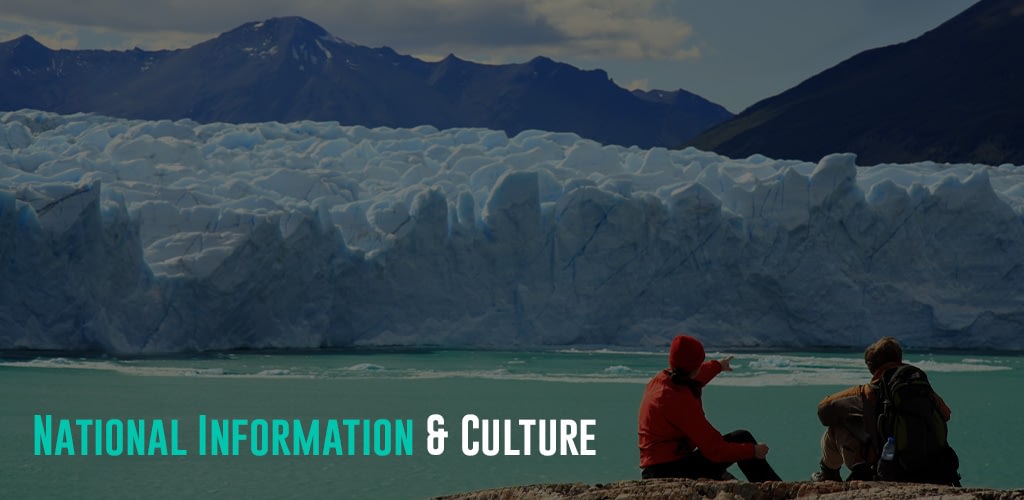
Antarctica is Earth’s southernmost and least-populated continent, almost entirely south of the Antarctic Circle and surrounded by the Southern Ocean, also known as the Antarctic Ocean. The continent comprises most of the Antarctic region, a cold, remote area in the Southern Hemisphere encompassed by the Antarctic Convergence. This convergence is an uneven line of latitude where cold, northward-flowing Antarctic waters meet the warmer waters of the world’s oceans, covering approximately 20 percent of the Southern Hemisphere.
Antarctica is mainly covered by an Antarctic ice sheet at an average thickness of 1.9 km (1.2 mi). The continent comprises the islands of Orkney, South Shetland, South Georgia, South Sandwich, Peter I, Bouvet, Heard, McDonald, Scott, and the Balleny Islands.
Despite being the fifth-largest continent, Antarctica has no native human population or permanent habitation. However, there are permanent human settlements where scientists and support staff reside, rotating for part of the year.
Additionally, Antarctica doesn’t have any countries within its territory. But seven countries, namely Argentina, Australia, Chile, France, New Zealand, Norway, and the United Kingdom, made defined claims to Antarctic territory. However, the claims are not legally recognized under the Antarctic Treaty of 1959.
Visit the International Association of Antarctica Tour Operators (IAATO) and the Secretariat of the Antarctic Treaty portals for information and details when planning your trip.
Antarctic Treaty
The Antarctic Treaty of 1959 plays a crucial role in governing activities and promoting cooperation in the continent. It was initially signed by twelve countries whose scientists had been active around Antarctica during the International Geophysical Year (IGY) of 1957-58 and now has 56 signing parties. The treaty has been in force since 1961 and led to creating a secretariat that will assist the Antarctic Treaty Consultative Meeting (ATCM) and the Committee for Environmental Protection (CEP). They will ensure that all activities in Antarctica are consistent with the purposes and principles of the Antarctic Treaty and its Protocol on Environmental Protection.
Here’s an overview of its role:
- Preservation of the Antarctic environment: The Antarctic Treaty aims to preserve Antarctica’s unique and pristine environment. It prohibits military activity, mineral mining, and nuclear testing and protects its flora and fauna.
- Facilitation of scientific research: The treaty system encourages scientific research in Antarctica by facilitating cooperation among nations. It promotes scientific information exchange, research project collaboration, and the sharing of research facilities and personnel.
- Regulation of human activities: The treaty system regulates human activities in Antarctica to minimize their environmental impact. It sets guidelines for tourism, fishing, and other activities to ensure they are conducted in a responsible and sustainable manner.
- Management of territorial claims: While the treaty does not recognize any territorial claims in Antarctica, it helps manage existing claims peacefully. It establishes a framework for resolving disputes and encourages countries to refrain from asserting new territorial claims.
- Promotion of peace and international cooperation: The treaty promotes peace and international cooperation by bringing together countries with diverse interests in Antarctica. It fosters diplomatic relations and cooperation among nations, contributing to stability in the region.
Special Travel Considerations
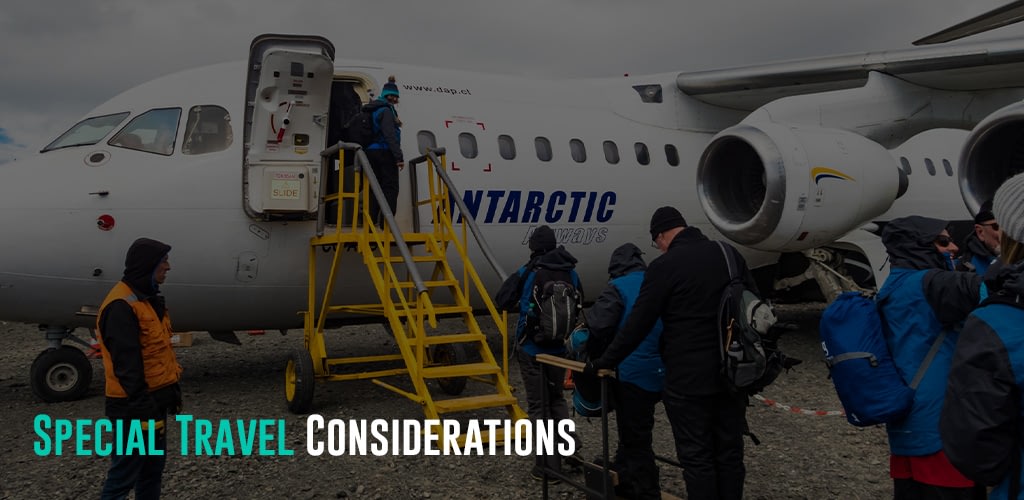
Each travel destination has rules and regulations that every tourist must consider. For Antarctica, all expeditions, whether cruise ships, yachts, flights, or scientific activities, must only be conducted with permission from the relevant Competent Authority of each Antarctic Treaty Party. For example, Australian expeditions, cruises, vessels, and registered aircraft must secure permits from the Australian government through the Australian Antarctic Program. The same applies to other Antarctica cruise and tour operators, which should secure permits from their registration country, which is also a signatory to the Antarctic Treaty.
For tourists or passengers on an organized visit to Antarctica, the tour operator usually arranges the appropriate permit, including all the logistics. However, there are visitor guidelines that every traveler must adhere to when visiting the reserved environment of Antarctica.
Hence, familiarize yourself with the following guidance when planning a trip to Antarctica.
- Do’s and don’ts to protect Antarctica from Avian Influenza.
- Reduce waste by bringing reusable items, using organic products, and avoiding disposables.
- Ensure clean and insect-free gear and packs before leaving home, and do the same between landings, camps, and regions in Antarctica by using the “boot wash.”
- Familiarize yourself with the general visitor guidelines on protecting Antarctic wildlife and vegetation, respecting protected areas and structures, as well as research stations, and leave no trace during the visit.
- Observing the general code of conduct during wildlife-watching activities.
Check the IAATO Visitor Guidelines to Antarctica for more information and details.
Travel Insurance
Travel insurance is typically mandatory for visitors to Antarctica. Most tour operators and expedition companies require travelers to have comprehensive travel insurance that includes coverage for medical emergencies, evacuation, trip cancellation or interruption, and other potential risks associated with traveling to such a remote and extreme environment.
Additionally, some jump-off countries may require proof of travel insurance to obtain the necessary permits or visas for transiting to Antarctica. Even if it’s not explicitly required, travel insurance is highly recommended due to the high cost of emergency medical evacuations from Antarctica and the potential risks of traveling to such a remote location.
It’s important to carefully review the terms and coverage of your travel insurance policy to ensure it meets the specific needs and requirements of your trip to Antarctica.
Visa Information
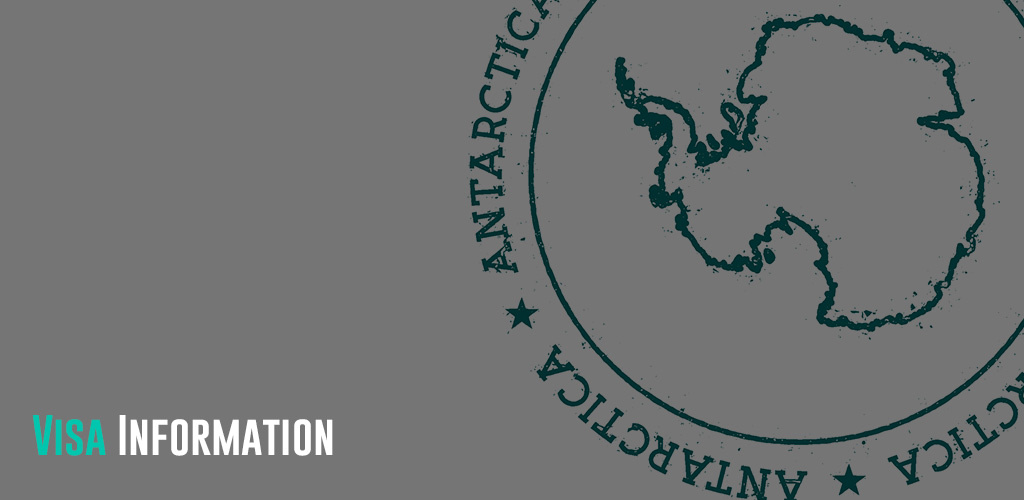
Travelers do not need a visa to travel to Antarctica. However, they might need a visa for their jump-off country to travel to Antarctica, depending on their nationality and country of passport.
Most excursions and expeditions to Antarctica start from South American countries, such as Ushuaia in Argentina, Punta Arenas in Chile, or Montevideo in Uruguay. Some cruises to the Ross Sea side of the continent depart from Hobart in Australia or Lyttelton or Bluff in New Zealand. Meanwhile, occasional trips to Antarctica begin or end in Cape Town or Port Elizabeth in South Africa.
Hence, travelers may check the relevant visa requirements of their jump-off countries through our specific country trip planners.
- Visa Information to Chile
- Visa Information to Australia
- Visa Information to New Zealand
- Visa Information to South Africa
Similarly, travelers may check the respective consulates and embassies when planning their trips.
Visa Information to Argentina
Travelers from visa-exempt countries can enter Argentina and stay up to 90 days. On the other hand, visitors from visa-required countries must secure an appointment with any Argentinian Embassies and Consulate and personally submit their visa applications and requirements.
Aside from visas, travelers must have a valid passport and a return or onward ticket when entering Argentina. Meanwhile, travelers from MERCOSUR and associated countries such as Brazil, Bolivia, Uruguay, Paraguay, Chile, Peru, Venezuela, Ecuador, and Colombia can use their valid Identity Card or National Identity Document.
Visa Information to Uruguay
Nationals and passport holders of 84 countries and jurisdictions can visit Uruguay without a visa and stay up to 90 days. On the other hand, visitors from other countries must apply for a visa from any Uruguay Embassies and Consulates at least 20 days before the travel date. Travelers can also check whether their country and passport need a visa from the official government portal of Uruguay.
Aside from visas, travelers must have a valid passport and a return or onward ticket when entering Uruguay. Meanwhile, travelers from neighboring countries can enter Uruguay using a valid identity card.
Popular Attractions
Antarctica is a natural reserve and an awe-inspiring destination that captivates adventurous travelers. With its pristine landscapes, abundant wildlife, and unparalleled natural beauty, Antarctica offers a unique and unforgettable experience. Antarctica promises an adventure of a lifetime at the ends of the Earth, from towering glaciers to majestic whales and penguin colonies.
Antarctic Peninsula
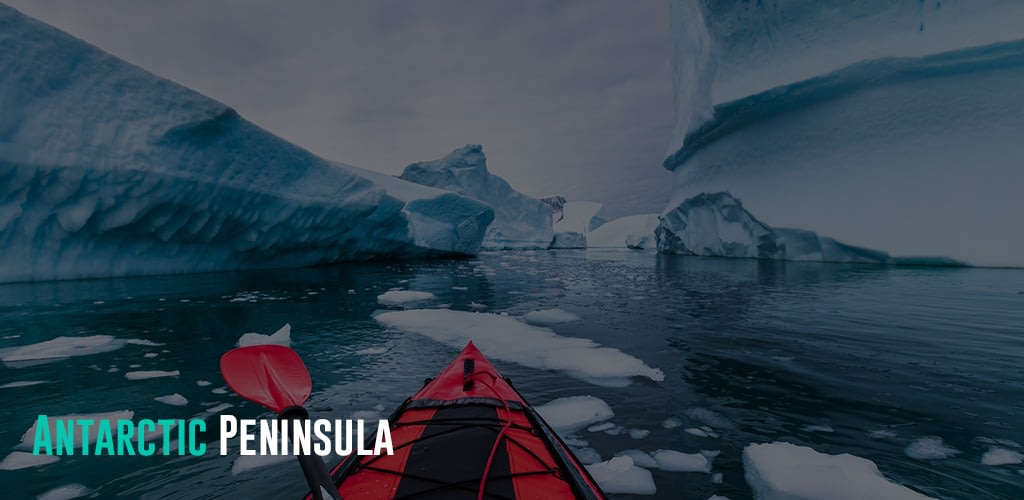
The Antarctic Peninsula, at the continent’s northernmost, is considered the gateway and most accessible region of Antarctica. The peninsula has the mildest climate in the continent and is known for its stunning scenery, including towering icebergs, rugged coastlines, and majestic glaciers.
Home to a wide variety of wildlife, visitors can have opportunities for close-up encounters with penguin colonies and spot seals on ice floes. Travelers may also hear sei whale vocalizations and watch various seabirds soaring overhead. Some Antarctic expeditions also include visits to scientific research stations along the peninsula, providing insights into ongoing research projects and allowing visitors to interact with scientists working in this remote environment.
Among the species in the Antarctic Peninsula are the leopard seal, Weddell sea, southern elephant seal, and crabeater seal. Penguin species in this region include chinstrap, emperor, gentoo, and the Adélie penguins. Moreover, the peninsula is also a habitat for the Antarctic minke whale, dwarf minke whale, and killer whale.
Ross Sea
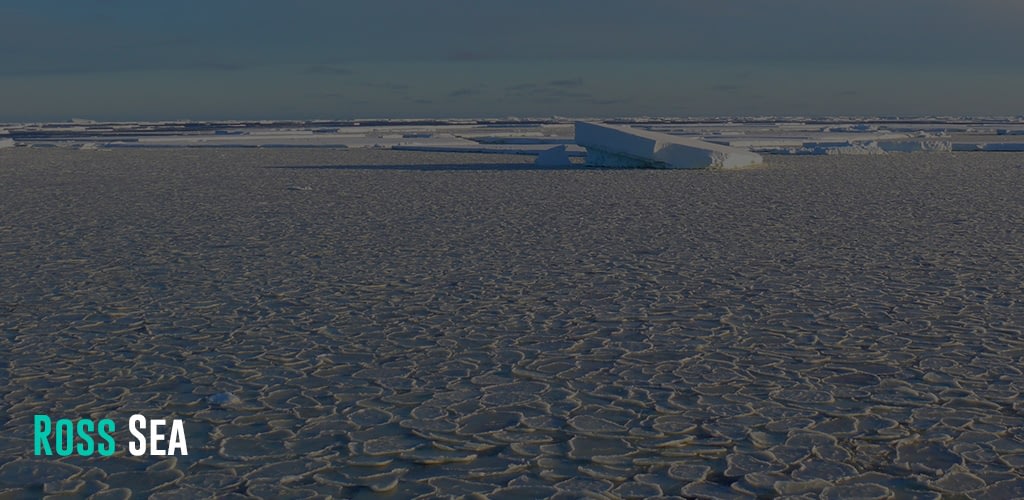
The Ross Sea is a deep bay located in the Southern Ocean in Antarctica and is famous for being the most enormous ice shelf on the continent, as thick as several hundred meters. Adding to its allure is Mt. Erebus, an active volcano towering 3,794 meters at Ross Island. A popular tourist spot, the region is thrived by large penguin colonies, majestic glaciers, icebergs, and historical sites. One of the famous and recent discoveries at Cape Royds, the island’s westernmost extremity, is Shackleton’s Hut. The hut housed the explorer Ernest Shackleton and his party during the winter of 1908. Today, Cape Royds and Shackleton’s Hut is under the custody of the Antarctic Heritage Trust (New Zealand).
Only a few expeditions venture into the Ross Sea, and the visit depends on the weather.
Emperor Penguin Colony
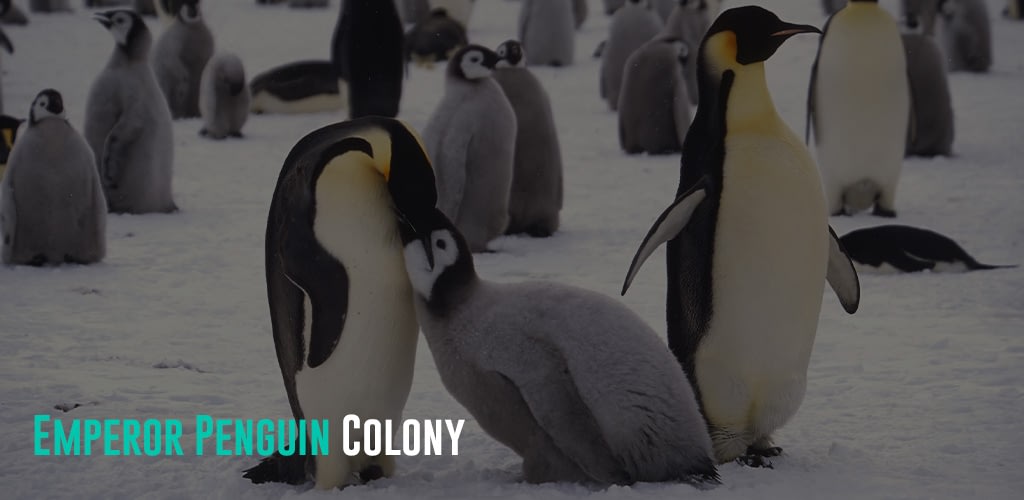
Travelers can find penguin colonies in many places around Antarctica. But there are few places where they are best seen, including the Emperor Penguins. Snow Hill Island, an iconic destination off the east coast of Antarctica, is among the best where the rarely-seen Emperor Penguins love to roam. The island is a natural habitat for these majestic creatures and the best location to see rookery and gentoo penguin colonies.
For a unique experience, travelers can join a penguin safari cruise for an up-close observation and interaction with these magnificent birds. Moreover, visitors can witness them interact with each other, nurture their young ones, or even engage in playful antics – all within touching distance. Most cruises can easily spot five penguin species such as Gentoo, Adelie, Chinstrap, King, and Macaroon.
Blood Falls
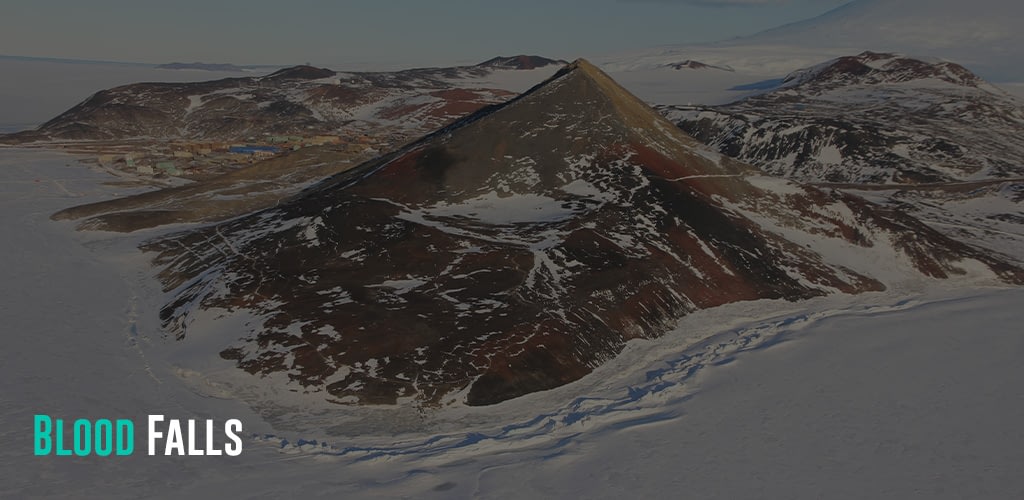
The Blood Falls have recently become a popular tourist attraction in Antarctica. Accessible only by helicopter from McMurdo Station (U.S.), Scott Base (New Zealand), or a cruise ship in the Ross Sea, visitors can view the falls from a safe distance and learn about its scientific discoveries.
Blood Falls is a five-story blood-red waterfall slowly flowing out of the Taylor Glacier of the McMurdo Dry Valleys in Victoria Land, East Antarctica. Its color is due to the rich iron oxide content mixed with high salinity water trapped inside the glacier. The area is part of Antarctica’s Ross Sea region visitor site assessment and monitoring program. Hence, tours are primarily based on visual observation and photography.
Drake Passage
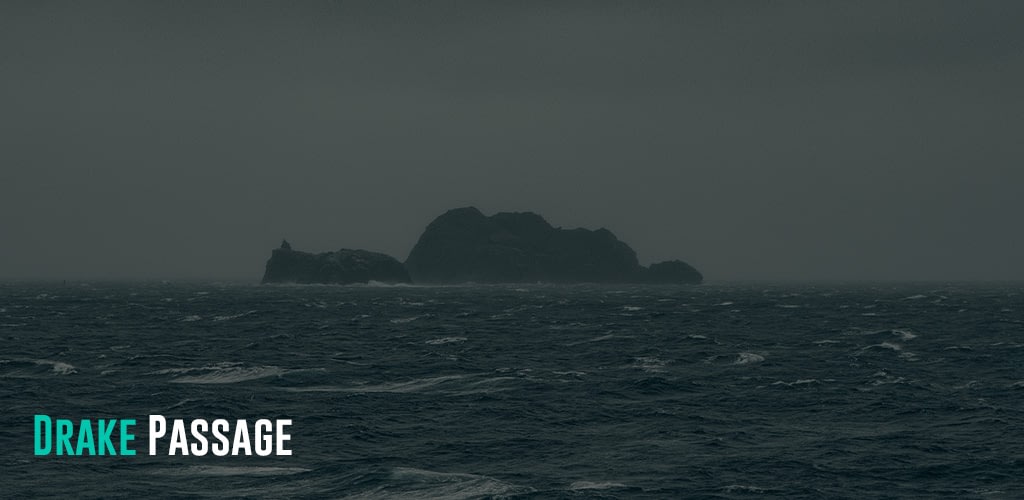
The Drake Passage extends from Cape Horn, Chile, and Argentina to Antarctica’s South Shetland Islands. The passage is where the Atlantic and the Pacific Oceans converge and is home to the roughest seas in the world.
Crossing the Drake Passage is the shortest route to the continent and takes two days of adventure, adrenaline, and dread. Travelers will surely experience vast and choppy waves, strong winds, and a sense of mounting excitement. Hence, visitors with sea motion sickness should come prepared.
Cruising the infamous Drake Passage is also an excellent place for albatross and other wildlife sightings in Antarctica. Moreover, approaching the continent provides spectacular views of colossal icebergs and spotting various whale species.
Port Lockroy
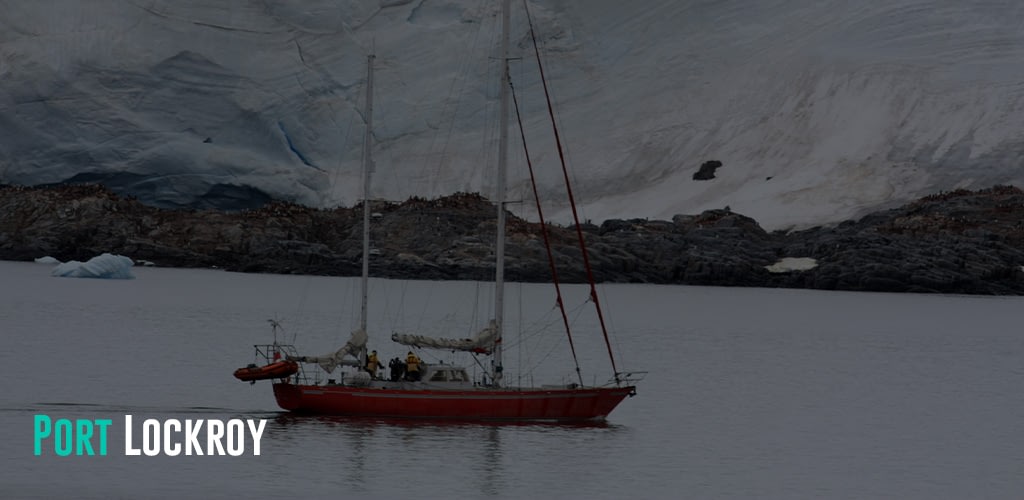
Port Lockroy is a natural harbor on the north-western shore of Wiencke Island in the Antarctica Peninsula. A well-preserved site, Port Lockroy is a major attraction and historical significance. It used to be a military base, a whaling station, and a research station.
Today, it is home to the planet’s southernmost operational post office, a small museum, a gift shop, and many breeding gentoo penguins. Moreover, the Port Lockroy (Gouldier Island) research station is still operational, studying the effects of climate change on local wildlife populations, particularly its resident Gentoo Penguin colony.
Visitors to Port Lockroy, particularly Jougla Point, can have close encounters with the Gentoo penguins and blue-eyes shags, go kayaking, and camping. In addition, travelers can check the Bransfield House to mail a paper and pen letter from its Penguin Post Office, check out its museum, or get themselves Antarctic gifts.
Lemaire Channel
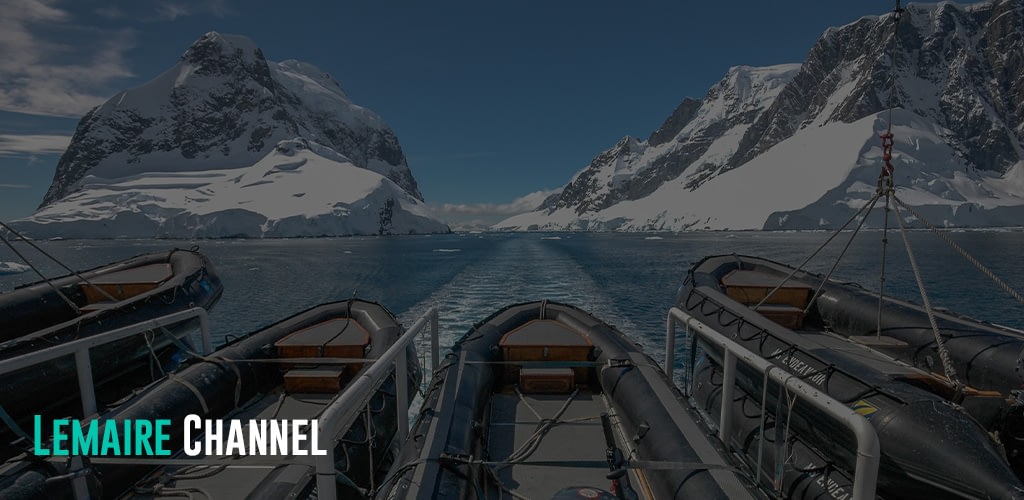
Cruising through the stunning Lemaire Channel, between Graham and Booth Island in Kyiv Peninsula, is a highlight. Often known as the Kodak Gap in Antarctica, the Lemaire Channel is an 11-kilometer natural strait surrounded by giant icebergs, glaciers, and sheer cliffs. A haven for photographers, the scenery and landscape that mirrors the waters are views to behold. Cruising the Lemaire Channel is also great for marine life enthusiasts to spot humpback whales and orcas. Moreover, expect to see all kinds of seals and other whale species.
South Shetland Islands
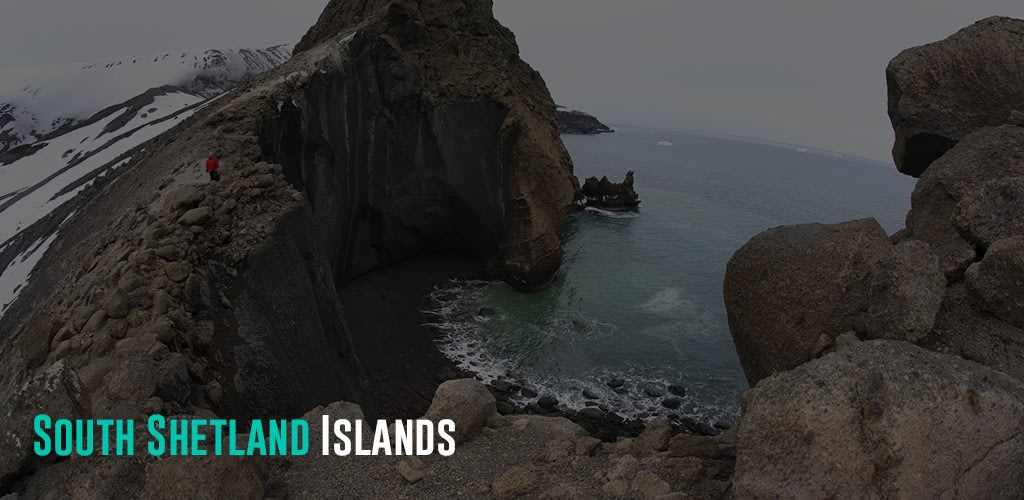
The South Shetland Islands, about 120 kilometers north of the Antarctic Peninsula, are one of the first stops en route to the continent’s mainland. A photographer’s dream destination, South Shetland comprises the King George, Livingston, Deception, and Elephant Islands. It is one of Antarctica’s most visited regions due to its warmer climate, abundant wildlife, and stunning scenery. Moreover, the islands are a great place to spot numerous bird, seal, and penguin species. If lucky, visitors can watch some whale pods playing not far from the shore.
The Pendulum Cove on Deception Island is a must-visit, where travelers can dip in its warm swimming waters. Deception Islands have a horseshoe shape, a caldera of an active volcano. In addition, Deception Island is one of the few places in the world where a ship can sail directly into the center of an active volcano.
Other famous are the Livingston Islands (the second-largest), which houses research stations in the continent, and Elephant Island, deriving its name from the large population of elephant seals.
Lastly, the largest and most populated in the South Shetland is King George Island, housing several countries’ research stations and an airport. Highlights include a visit to the Holy Trinity Church and tours of the research stations. King George Island also hosts the annual Antarctica Marathon in late February to early March.
The best time to visit the South Shetland Islands is December through March for a warm temperature and extended daylight. The prime penguin hatching season is late December through January, and whale-watching is best in February and March.
Primary Spoken Language(s)
As a universal language, English is Antarctica’s primary spoken language. Most scientific research stations and expedition teams in Antarctica use English as the standard language for communication due to the diverse nationalities of personnel working there. Additionally, English is often used as the language of instruction in educational programs and briefings for visitors to the continent. However, depending on the specific research station or expedition, travelers may also encounter other languages spoken by personnel from different countries.
Safety Concerns
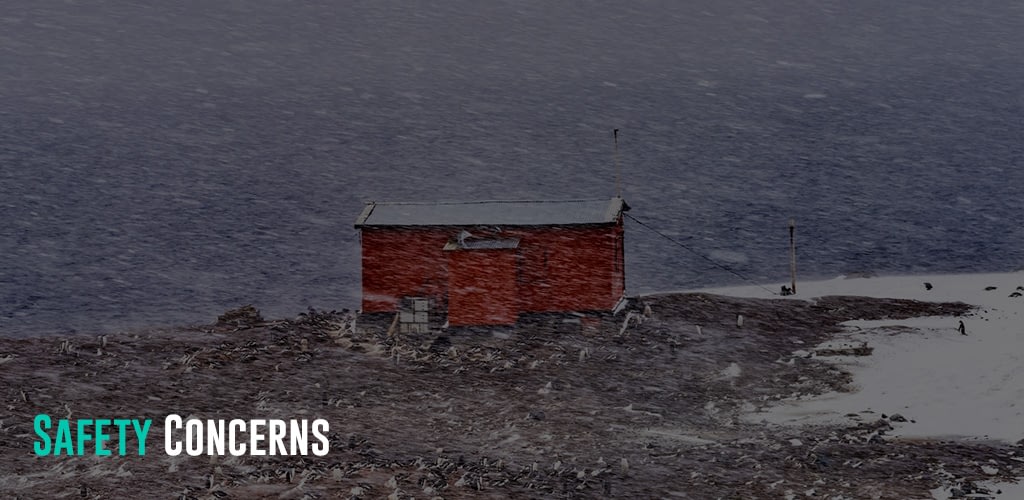
Antarctica doesn’t have public infrastructure facilities that cater to tourists’ needs. No public communications services, medical facilities, or established tourism industry infrastructure exists. Though the research stations may have satellite telecommunications equipment, they will be limited to scientific research. Hence, travelers may have difficulties obtaining outside assistance in emergencies.
However, the greatest threat to travelers in Antarctica is the environmental hazards due to extreme and unpredictable weather conditions. The continent is 99% covered by a permanent ice sheet with an icy, dry, and windy climate. These severe elements can put anyone at risk of frostbite, dehydration, sun overexposure, and eye damage from reflected glare. Hence, travelers must ensure clothing and equipment that meets the Antarctic standards.
Additionally, cruising along enormous icebergs and the rough seas, particularly the Drake Passage, are at risk of maritime accidents.
Budget Considerations
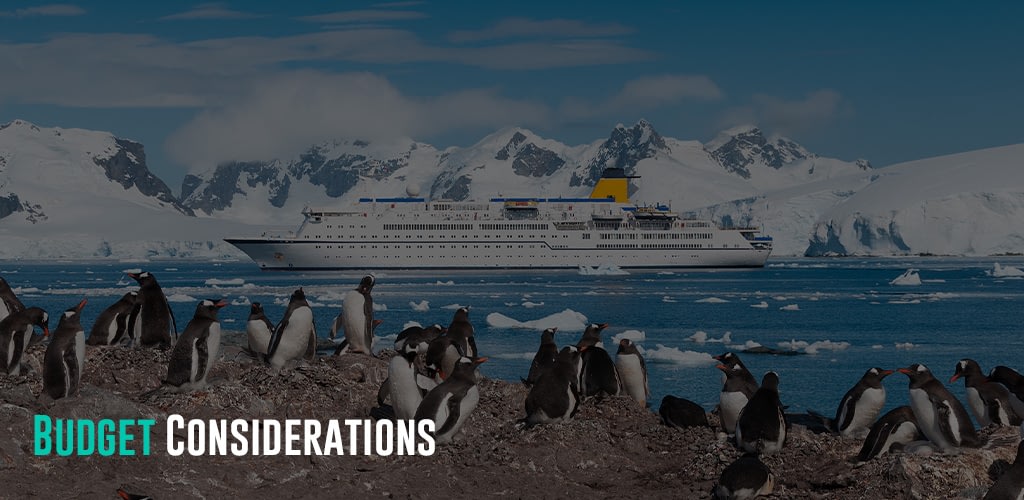
Antarctica is not an ordinary tourist destination. There are no regular commercial flights or trips, so traveling to the white continent is usually in a collective group and can be expensive. Hence, travelers must be flexible for schedule changes, delays, or cancellations and have an additional budget ready for trip extension.
The cheapest way to see the unparalleled views of Antarctica from the air is by joining scenic flights to the white continent. Qantas Air operates a 12-hour scenic flight to Antarctica for as low as $1199 to as much as $7,999.
The most common way to visit Antarctica is by joining cruises. Depending on the inclusions and length of the journey, the cost ranges between $7,000 to $15,000 for an 11 to 15-day journey. These cruises usually depart from Ushuaia in Argentina, Australia, and New Zealand. Joining cruises allows travelers to see and explore the beauty of the Antarctic Peninsula. However, they must endure the rough seas when crossing the Drake Passage.
A better option to visit Antarctica is by joining a flight-cruise combination for around $14,000 for an 8-day. It usually covers a round-trip flight from Punta Arenas to King George Island. From the island, visitors will join a cruise ship that will take them around the Antarctic Peninsula.
The ultimate way to explore the interior of the South Pole is by taking chartered flight tours. Taking this option allows travelers to ski, camp, and climb the massifs of Antarctica. It also gives opportunities to visit the Emperor Penguin colony of the continent. However, joining chartered flight tours to Antarctica comes with a massive price, from $32,000 for a 5-day trip to over $90,000 in 9 days.
Customs And Import Restrictions
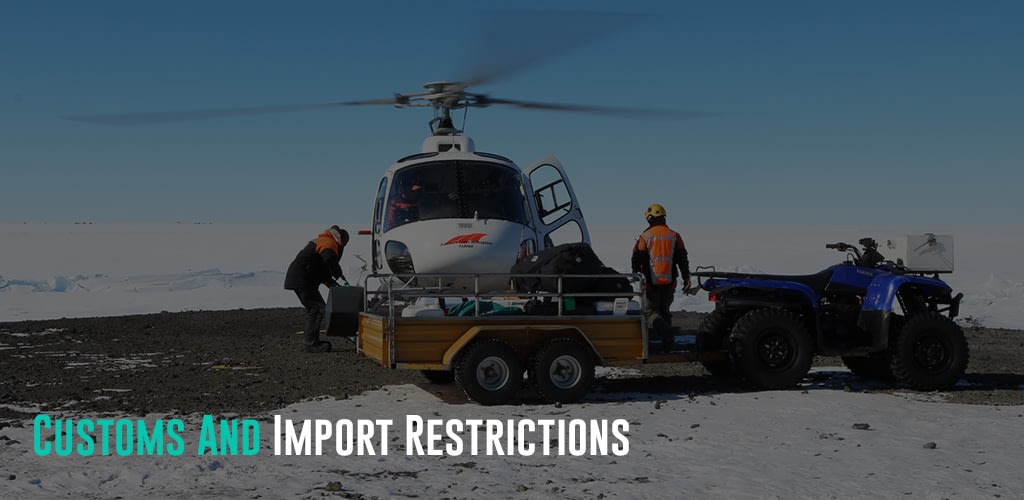
A continent without fixed public infrastructure, Antarctica does not have customs and import restrictions for arriving travelers. However, visitors must consider the customs policies of their country of transit.
Notably, most excursions and expeditions to Antarctica start from South American countries such as Argentina, Chile, and Uruguay. Some cruises to the Ross Sea side of the continent also depart from Australia and New Zealand. Meanwhile, occasional trips to Antarctica begin or end in South Africa.
Hence, travelers may check their jump-off countries’ relevant customs and import restrictions through our specific country trip planners.
- Customs and Import Restrictions to Chile
- Customs and Import Restrictions to Australia
- Customs and Import Restrictions to New Zealand
- Customs and Import Restrictions to South Africa
Customs and Import Restrictions to Argentina
Travelers to Argentina can bring tax-free items such as personal goods and gifts worth $500 and an additional $500 worth of gifts from tax-free stores upon arrival.
Restrictions are imposed on some goods, and travelers must declare amounts exceeding $10,000 or equivalent on arrival. Moreover, the following goods require prior approval from competent authorities:
- fruits, plants, flowers, vegetables and their parts, seeds, roots, bulbs, rhizomes and soil
- live animals, meat, dairy products, beekeeping, semen, veterinary biological products and animal food
- firearms and ammunition
- medications with prescriptions
Meanwhile, Argentina Customs authorities prohibit entry of some goods. It includes the following:
- narcotics and illegal drugs
- counterfeit products
- pornographic material
- animal and plant origin that is subject to sanitary intervention by SENASA-INAL and phytosanitary intervention by IASCAV
Visit Argentina’s customs portal for more information on the country’s import policies for travelers.
Customs and Import Restrictions to Uruguay
All arriving travelers to Uruguay can bring tax-free items such as personal goods and gifts worth $500 for adults and $250 for minors. Upon arrival, travelers can get an additional $850 worth of gifts from tax-free stores. Moreover, visitors over 18 can carry four cartons of cigarettes and 6 liters of alcoholic beverages.
There are no restrictions on the amount of cash a visitor may bring. However, amounts exceeding $10,000 or equivalent must be declared on arrival.
On the other hand, Uruguay Customs authorities ban or prohibit entry of some goods, such as narcotics and pornographic materials. Restrictions are imposed on some goods and require prior approval from competent authorities. It includes domestic animals, wild animals and plants, their by-products, and firearms and ammunition.
Visit Uruguay’s customs portal for more information on the country’s import policies for travelers.
Climate Considerations
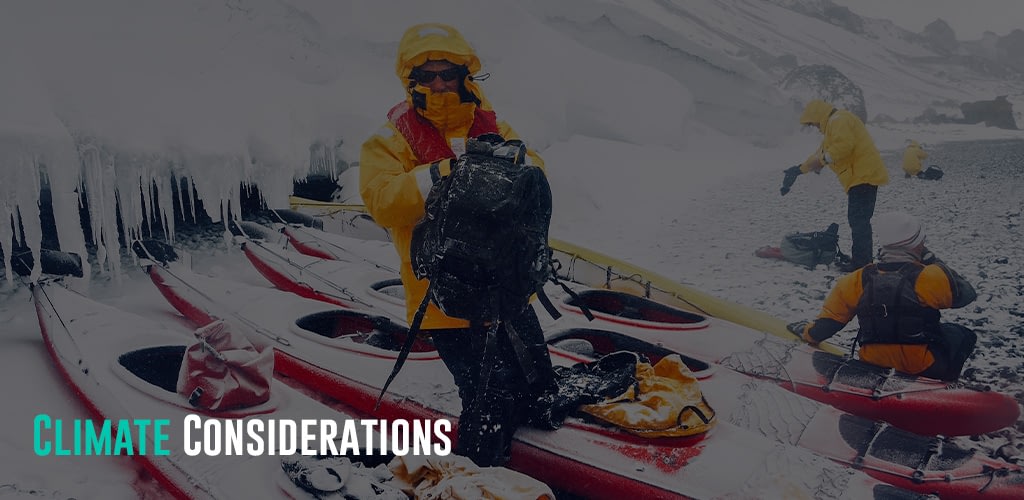
Antarctica is the coldest, windiest, and driest continent on Earth. Generally, Antarctica’s climate varies significantly with latitude, elevation, and proximity to the ocean. The continent characterizes extreme cold and darkness during winter, while summer brings milder temperatures and prolonged daylight. Its coastal areas can experience heavy snowfalls, with up to 1.22 m recorded in 48 hours. Moreover, intense katabatic winds blow off the polar plateau to the continent’s edge.
From December to February, summer sees milder coastal temperatures ranging from 5°C to 15°C. Additionally, the continent has extended daylight hours and even 24-hour sunlight near the summer solstice. Access to Antarctica is typically limited to the warmer months when sea ice melts sufficiently for expedition vessels.
In contrast, winter from June to August brings intense cold, especially inland and higher elevations. East Antarctica is colder than the West due to its higher elevation. Its average winter temperature ranges between -10 °C and -30 °C near the coast but can plunge as low as -80 °C on the interior plateau. On the other hand, the west coast experiences comparatively milder conditions, with temperatures above freezing for three to four months during summer. Its winter temperature rarely drops below -10°C.
Primary Transportation Options
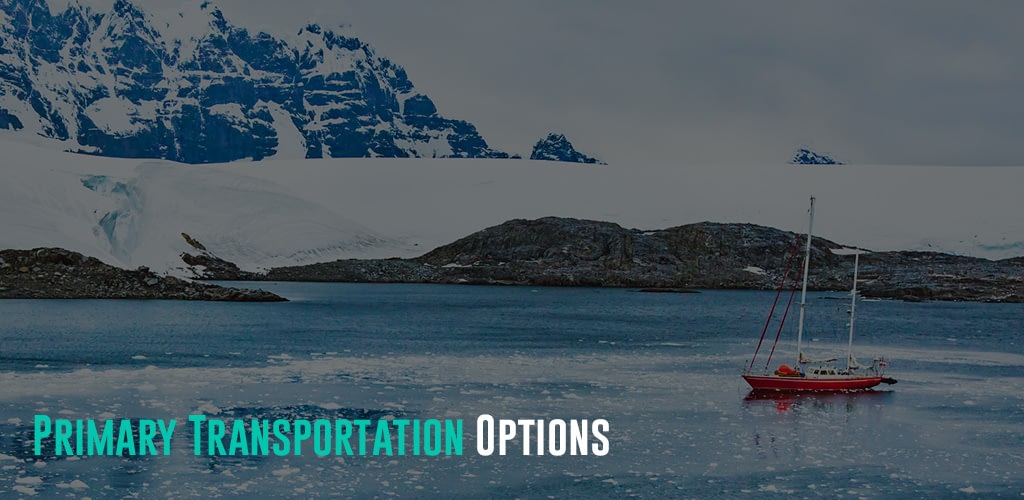
Antarctica has no public transport infrastructures, whether roads, ports, or airports. Instead, only makeshift landing strips and ports cater to special flights and cruise expeditions. No public transportation exists, so travelers can only visit Antarctica through organized expeditions, tours, and cruises. Depending on the available services, your operator arranges your interior transfers by boat or goes skiing and hiking. But whatever transportation option and services you choose, please ensure the organizer is a member of the International Association of Antarctic Tour Operators (IAATO).
Air Transport
Flying is the best option for travelers who want to witness the vast interior of Antarctica, fancy skiing to the South Pole, climb Vinson Massif (the highest peak in Antarctica), or see the Emperor Penguin colony. However, flights are weather-dependent, and delays are possible.
Scenic Flights
The only Antarctica scenic flights depart from Sydney, Melbourne, Brisbane, and Perth in Australia during summer. Qantas Airlines operates 12-hour scenic flights to Antarctica and may cost between $1199 and $7999. It allows travelers unparalleled views of the continent aboard the Boeing 787 Dreamliner.
Chartered Flights
There are no commercial flights to Antarctica. Therefore, travelers must book with a charter operator to reach Antarctica by plane. Although rare, taking chartered flights to Antarctica allows travelers to get to the interior of the South Pole. Depending on your operator, it also brings opportunities to do some hiking, camping, skiing, climbing, or seeing the Emperor Penguin colony. Moreover, flying is a good option for travelers who want to avoid the rough seas at the Drake Passage. However, flights are expensive and weather-dependent, making delays and cancellations possible.
Most charter flights to Antarctica depart from Argentina, Chile, Australia, and South Africa. One of the operators based in Cape Town, South Africa, is Antarctic Logistics Center International (ALCI), which flies to the Russian Novo Air Base. Another operator is Antarctic Logistics & Expedition (ALE), which departs from Punta Arenas, Chile, and lands at the Union Glacier. Prices vary and costs over $30,000.
Fly-Cruise Combination
Travelers with seasickness would likely prefer a fly-cruise combination when visiting Antarctica. It is to avoid the infamous Drake Passage crossing but still see the Antarctic Peninsula. With this option, travelers can fly to King George Island and then join a cruise ship to the Antarctic Peninsula before returning via plane again to the island. Most fly-cruise depart from Punta Arenas, Chile, and reach King George Island in 2 hours. This option allows visitors to cut at least four extra days of cruising the Drake Passage from their journey, costing around $14,000 for an 8-day trip. One of the pioneering fly-cruise operators is Antarctica21, which is based in Chile.
Cruises
Taking a cruise ship is the most common and efficient way to visit the Antarctica peninsula and see its rich wildlife. Cruise operators usually handle all logistics, from permits to itineraries and excursions. Depending on the cruise length and schedule, they charge between $7,000 and $25,000.
Most Antarctica cruises depart from Ushuaia in Argentina and take 2-3 days to reach the destination, depending on the weather. This route crosses the Drake Passage, infamous for its rough seas, which usually delay the journey.
Additionally, travelers can join Antarctica cruises departing from Tierra del Fuego in Argentina and Port Stanley, Falkland Islands. Occasional cruises also leave from Punta Arenas in Chile, Buenos Aires in Argentina, and Puerto Madryn in Argentina. However, these departures are far rarer.
Other cruise departure ports are Invercargill in New Zealand and Hobart in Australia, both on the eastern side of Antarctica. These cruises have various stops at remote islands such as Macquarie Island and Campbell Islands, which are rich in wildlife and provide excellent photography opportunities. Cruises from these ports are less frequent than in South America and take roughly seven days, depending on the weather. Because of the longer distance, tours generally take four weeks and are usually more expensive. Moreover, it is essential to note that trips leaving from New Zealand and Australia are generally much more rugged and wild. The seas will be rougher, and the climate on the eastern side of Antarctica will be colder and windier.
Hence, travelers should consider what they want to see from their Antarctica experience. The most enormous icebergs in the world are in Eastern Antarctica, but there is more wildlife on the peninsula.
Yacht
Aside from cruise ships, there are several yacht tours from Ushuaia, a more specialist option uncommon for tourists. Yacht tours have great versatility regarding landing locations and fewer queues to go ashore due to their smaller size. However, they are far more susceptible to rough seas and cost around $1,000 daily.
Start Trip Planning
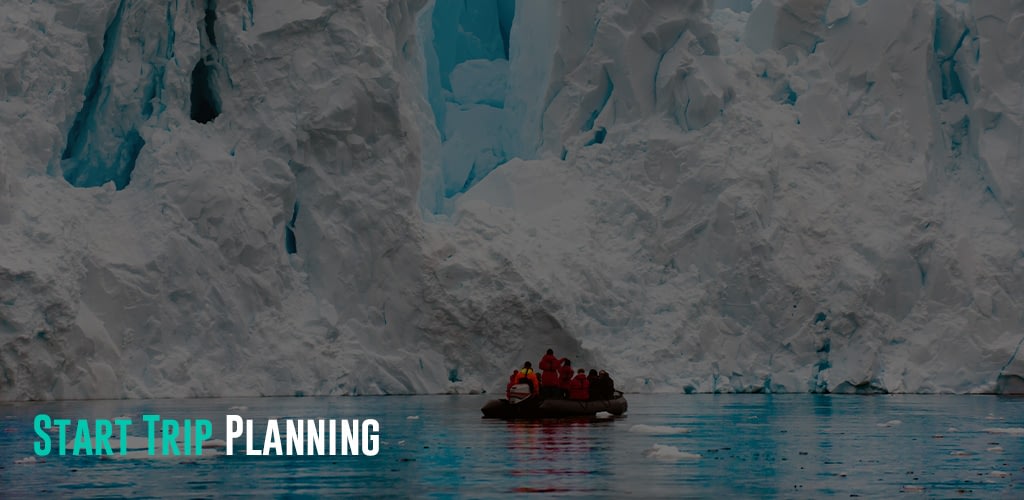
Travel-Wise is made from the ground up to help people travel more, break down the barriers that make it tough to get going, and start your journey as painlessly as possible. Bookmark our other Country Guides to help kick-start your research for future travels. We also offer templated itineraries from our staff and community that help serve as a building block for your trip plans. Alternatively, we also utilize AI to offer a way to generate itinerary ideas. This saves much time just getting you up and running with a template. From there, you can use the trip planner to create your customized itinerary, invite friends and family for collaboration, find others from Travel-Wise to join the trip, book and track important information, journal, and share your experiences at the end or along the way!

